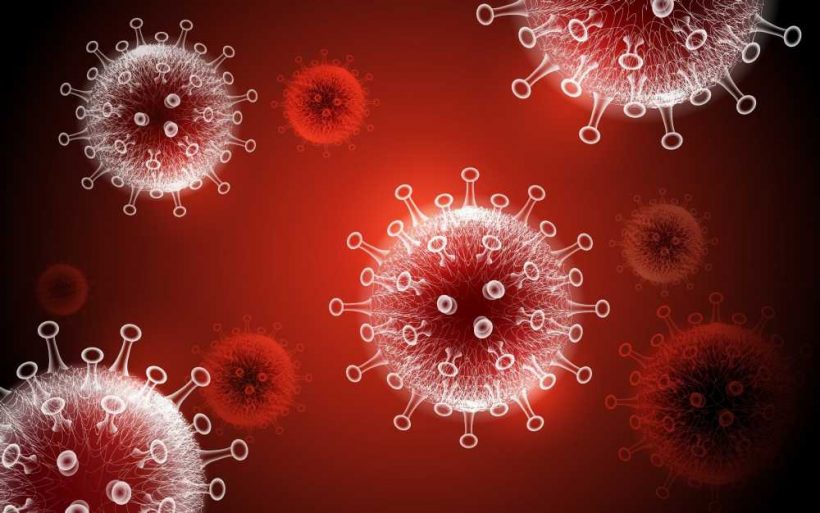In a recent study published in Polymers, researchers synthesized and evaluated a silver and polyurethane nanocomposite surface coating material that exhibits antiviral activity against severe acute respiratory syndrome coronavirus 2 (SARS-CoV-2).

Background
During the initial stages of the coronavirus disease 2019 (COVID-19), when the route of transmission of SARS-CoV-2 was thought to be primarily through fomites, surface sanitization with disinfectants and sanitizers was widely recommended. Although studies have now shown that the primary mode of viral transmission is through aerosolized droplets expelled through coughing, sneezing, and talking, it is believed that contaminated surfaces do play a role in the spread of the virus.
Many heavy metals and metal oxides such as magnesium, zinc, and copper are known to exhibit antiviral properties, and nanoparticles of these metals have been used to reduce the persistence of viruses on surfaces. Silver nanoparticles coated onto fabrics and used in face masks have been seen to reduce viral loads.
Metal nanoparticles are combined with polymers to form nanocomposite polymers that exhibit antimicrobial properties. A silver nanoparticle composite polymer that can be used to coat preinstalled touchpoints could provide self-sanitizing surfaces without the need to replace existing fixtures.
About the study
In the present study, the researchers used morpholine-terminated polyurethane as the continuous phase to build the nanocomposite, since they form tough films, and the starting materials to form the polyurethanes are inexpensive. Oligomeric diol components are polymerized with diisocyanates to synthesize polyurethane, and its physical properties can be modulated by altering the diol or diisocyanate structure or adding an end group.
KrasolTM HLBH-P2000 and 4,4′-methylene diphenyl diisocyanate were the diol and diisocyanate components, respectively, in morpholine terminated polyurethane, and 4-(2-aminoethyl) morpholine was the end group. Nuclear magnetic resonance (NMR) spectroscopy and size exclusion chromatography (SEC) were used to characterize the polyurethane.
The nanocomposite was formed by adding silver nanoparticles to polyurethane dissolved in anhydrous tetrahydrofuran to cast films of uniform thickness. The film was then heated at 50 °C and 800 mbar in a vacuum oven and allowed to cool. Fourier transform infrared spectroscopy (FTIR) was used to determine the reactivity of the nanocomposite.
The films were sterilized using ethanol and ultraviolet light. HEK293T cells with stable expression of angiotensin-converting enzyme 2 (ACE2) and transmembrane protease serine 2 (TMPRSS2), and pseudotyped viruses expressing the SARS-CoV-2 Beta spike protein were used to test the antiviral activity of the films.
Results
The results indicated that the addition of 10 wt.% silver nanoparticles to the morpholine-terminated polyurethane formed robust composite films. The silver nanoparticles also increased the tensile strength, and the toughness and elasticity moduli of the polyurethane.
The NMR spectrum contained well-resolved signals for all the expected structural features of the polyurethane. The SEC results revealed a number averaged molecular weight of 8700 g/mol and weight averaged molecular weight of 15,400 g/mol. The FTIR spectrum did not indicate unreactive isocyanate and showed interactions between the silver nanoparticles and the NH and carbonyl groups of the polyurethane.
Mechanical testing determined that the silver polyurethane nanocomposite had higher tensile and toughness moduli and ultimate tensile strength than the morpholine-terminated polyurethane but had lower elongation at break. However, since the material was being developed for coating fixtures and touchpoints, elongation at break was not an important requirement.
The biological testing revealed a 67% reduction in the viable viral amount by the nanocomposite after 24 hours with no human intervention, compared to polyurethane without silver nanoparticles.
Conclusions
To conclude, the researchers developed and tested a silver nanoparticle polyurethane composite to develop a self-sanitizing, antiviral material to coat touchpoints. The results revealed that the silver nanoparticles exhibited significant antiviral activity and increased the ultimate tensile strength and the tensile and toughness moduli of the polyurethane.
Polyurethanes often form the base in many commercial coatings and paints. This study provides a viable option to provide existing fixtures and surfaces such as door handles with an antimicrobial coating, instead of having to replace them with copper or other antimicrobial metal fixtures. Though SARS-CoV-2 is now known to spread less through fomites than through direct aerosolized particles, this nanocomposite can be used to control transmission in the early stages of future pandemics before vaccines and therapeutic methods are developed.
- Lam, W.T., Babra, T.S., Smith, J.H.D., Bagley, M.C., Spencer, J., Wright, E., and Greenland, B.W. (2022). Synthesis and evaluation of a silver nanoparticle/polyurethane composite that exhibits antiviral activity against SARS-CoV-2. Polymers. doi: https://doi.org/10.3390/polym14194172 https://www.mdpi.com/2073-4360/14/19/4172
Posted in: Medical Science News | Medical Research News | Disease/Infection News
Tags: ACE2, Angiotensin, Angiotensin-Converting Enzyme 2, Chromatography, Copper, Coronavirus, Coronavirus Disease COVID-19, Coughing, covid-19, Enzyme, Ethanol, Magnesium, Nanoparticle, Nanoparticles, Polymers, Protein, Respiratory, Sanitization, SARS, SARS-CoV-2, Serine, Severe Acute Respiratory, Severe Acute Respiratory Syndrome, Silver Nanoparticles, Sneezing, Spectroscopy, Spike Protein, Syndrome, Virus, Zinc
.jpg)
Written by
Dr. Chinta Sidharthan
Chinta Sidharthan is a writer based in Bangalore, India. Her academic background is in evolutionary biology and genetics, and she has extensive experience in scientific research, teaching, science writing, and herpetology. Chinta holds a Ph.D. in evolutionary biology from the Indian Institute of Science and is passionate about science education, writing, animals, wildlife, and conservation. For her doctoral research, she explored the origins and diversification of blindsnakes in India, as a part of which she did extensive fieldwork in the jungles of southern India. She has received the Canadian Governor General’s bronze medal and Bangalore University gold medal for academic excellence and published her research in high-impact journals.
Source: Read Full Article
